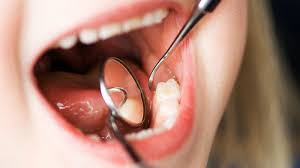
We all want our children to have healthy mouths and to avoid tooth decay and the need for fillings. If you look at your child’s back teeth, you will see the teeth have lines and grooves in the biting surface. We call these fissures. Like any groove, these are the most difficult place to clean correctly with a toothbrush. Because fissures are so hard to clean, food and bacteria tend to become stuck in them making them vulnerable to decay.
No matter how well you clean those back teeth, it is a common place for decay in children’s teeth. If a tooth is looking likely to develop a cavity, we want to get to it as early as possible. A useful strategy is to seal off the deep grooves to prevent bacteria entering them. This is what we call a fissure sealant. Detecting any early damage will allow us to clean the grooves and seal them before any decay develops.
Fissure sealants are thin, white, plastic coatings painted along the fissures, which “seal” these decay-prone grooves. The coating bonds to the tooth surface helping to prevent food and bacteria from collecting and minimizing the risk of decay starting in these hard-to-clean areas.
Once there is decay in a tooth, we will have to drill into the tooth enamel to remove the decay and place in a filling. This can sometimes require local anesthetic and can be uncomfortable for a child.
The beauty of a fissure sealant is it allows us to clean the groove out without entering though the enamel, thus maintaining the tooth’s integrity and strength. The whole process only usually takes a minute or two and does not require any anesthetic.
If you think your child may benefit from fissure sealants contact your local children’s dentist to discuss an appointment. Fissure sealants are also claimable for eligible children under the Child Dental Benefits Scheme.
